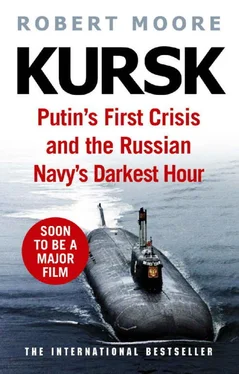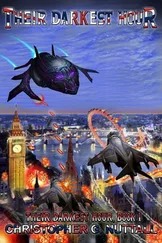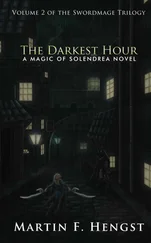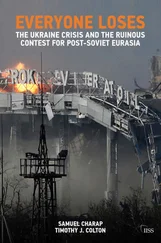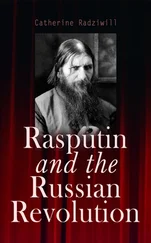The first Russian HTP torpedo was known by the strictly functional name of ‘53-57’, the 53 referring to the diameter in centimetres of the torpedo tube, the 57 to the year it was introduced. Moscow’s military leaders, adhering to a deep-seated belief that bigger was better, committed themselves to building ever more powerful weapons. Driven by Cold War competition, they ordered the development of a larger, more potent HTP torpedo. The result was the 65-76 torpedo. As the name suggests, the weapon would be launched from 65cm tubes and it was introduced in 1976. The torpedo found a place throughout the Russian fleet of nuclear-powered multi-purpose submarines. The Kursk was carrying two of them on the morning of the test. One had just been loaded into the starboard’s tube number four, and would be the first practice torpedo fired. The second weapon due to be launched that day was a USET-80, a smaller but powerful torpedo that uses an electric propulsion system.
Once the firing countdown is under way, the launch technicians run through a strict checklist of preparations:
• confirm the outer torpedo tube door is securely shut; double-check it by opening a valve and making sure the water is not under high pressure;
• secure the inner door in the open position; check if the empty torpedo tube is clear of debris;
• check the torpedo’s latch claws are attached; remove the safety covers and pins in the torpedo’s nose;
• observe closely as the hydraulic lifts align the torpedo with the 65cm tube on the starboard side.
At this point, the weapon glides forward into the torpedo tube, immense power contained within a deceptively simple casing. The intercom to the command centre is kept open to allow for a constant dialogue with officers in the second compartment as the final series of checks continues in the torpedo room:
• remove the protective covers from the propellers and from the steering at the rear of the torpedo;
• allow the torpedo to slot home; connect the control cables;
• shut the inner door; flood the tube.
Seawater rushes into the torpedo tube until the pressure is equal to that of the outside ocean. The torpedo room then waits for the captain’s instructions to open the outer door in the external hydro-dynamic hull, breaking the clean shape of the submarine’s bow.
Then they wait for the order to fire.
In the command post at this time, all eyes are on the captain. Perhaps only a fighter pilot has the same singlehanded ability to shape the outcome of a mission as that of a submarine commander. Although there is an intense camaraderie on board – more than one hundred highly trained professionals working as a team, each with a very specific responsibility – as soon as a torpedo launch or missile firing is bring prepared, or when a submarine is involved in combat or an emergency, the commanding officer makes all the big decisions. One man alone in the attack centre determines the fate of the submarine and the success of the mission.
In no other walk of life can a man in his thirties or early forties be thrown into such a demanding and lonely job as commanding a nuclear submarine, where panicking under pressure can have catastrophic results. Once at sea on covert patrol, submarines are expected to communicate only in absolute emergencies. The commanding officer of a ballistic-missile submarine is on his own, with sufficient power to annihilate large parts of the planet.
Lyachin opted to launch his exercise attack on the Peter the Great cruiser from periscope depth. Firing a torpedo from deeper is an option, and in war, when preserving the submarine’s covert status is a matter of survival, that may be the most desirable tactic. But it is much easier to engage a target when your periscope and masts are breaking the surface – like going into a fight with your eyes open. Lyachin tracked the Peter the Great with all the Kursk ’s sensors: the periscope, the sonars and the electronic intercepts of the surface ship’s radar. He confirmed the identity of the target, matching the Peter the Great ’s passive sonar signature to his library data. Everything was ready for the attack.
The latest target information flashed down the control cable attached to the torpedo’s guidance system. On the appropriate command, the motor of the 65-76 would start up, and as it gathered momentum compressed air would eject the torpedo from the tube and hurl it into open water. Then, once safely clear of the submarine, the propulsion system would kick in, the HTP and the kerosene igniting in their virulent chemical reaction, driving the torpedo towards its target at thirty knots.
Captain Lyachin had no reason to know the service history of the practice weapon that lay in tube number four, which at any moment he would send hurtling on its way towards its target. The torpedo was manufactured in 1990 in the Mashzavod factory in Alma-Ata, the biggest city in Kazakhstan and lying deep in Soviet Central Asia. In the possession of the Northern Fleet since January 1994, when it had last been serviced, the torpedo had never been used before, unlike so many of the other practice weapons. Technical documents refer to this particular 65-76 torpedo by the factory manufacturing number 298A 1336A PV. But no paperwork revealed its greatest and most terrifying secret: deep within the casing, over a period of six years, corrosion had invisibly begun to weaken internal metal and plastic components, including gaskets perilously close to the tank that contained the HTP.
The torpedo had been loaded onto the submarine on 3 August by two of the Kursk ’s technicians, Senior Midshipman Abdulkhadur Ildarov and Senior Lieutenant Alexei Ivanov-Pavlov. The base supervisor was absent so they signed the required document themselves, confirming that the weapon was now the responsibility of the Kursk crew.
From the moment they signed for the torpedo and winched it through the loading hatch and into the first compartment Ildarov and Ivanov-Pavlov unwittingly transformed the Kursk into a potential disaster zone. The horrifying destructive power of a compromised HTP torpedo had become devastatingly clear forty-five years earlier.
On a sparkling midsummer’s morning in 1955 the British Royal Navy’s submarine Sidon was in Portland harbour, moored alongside a depot ship. With her crew at ‘harbour stations’, HMS Sidon was about to proceed to sea, and all her hatches were shut except at the conning tower.
Suddenly, inside her number three tube, a twenty-one-inch torpedo known by its nickname ‘Fancy’ exploded without warning. Debris was hurled backwards into the torpedo room, and toxic fumes swept through the submarine, killing twelve men. HMS Sidon began flooding. Nearby ships made desperate attempts to keep her afloat, but less than thirty minutes after the explosion she sank.
The accident triggered an exhaustive investigation by the Royal Navy, and for many years the results of the inquiry were kept secret. The Admiralty Board believed that high-test peroxide had leaked out of a pipe and reached the catalyst chamber of the torpedo. Its top-secret report concluded that HTP droplets may have ignited on ‘an oily or greasy surface… [and] violent combustion and consequent rise of pressure burst open the torpedo tube’. Six men died from blast and burn injuries; the other six were killed by the thick, poisonous fumes of carbon monoxide that quickly filled the submarine.
At first glance, hydrogen peroxide, H 2O 2, seems an extraordinary benign liquid, colourless and odourless. As the chemical formula indicates, it is just water (H 2O) with an extra oxygen atom. But when it comes into contact with certain metals, such as copper, the reaction is fast and furious as it tries to eject the additional oxygen atom, producing immense amounts of heat. Copper is found in brass and bronze, both of which were used in the construction of the torpedo tube, and investigators realized that if the hydrogen peroxide leaked while a torpedo was in position for launch, the chemical reaction would begin.
Читать дальше
